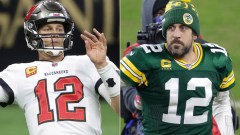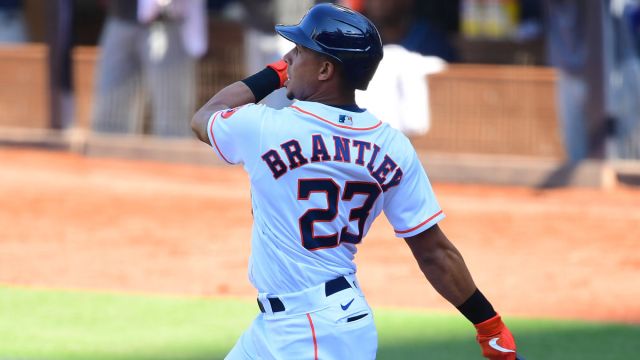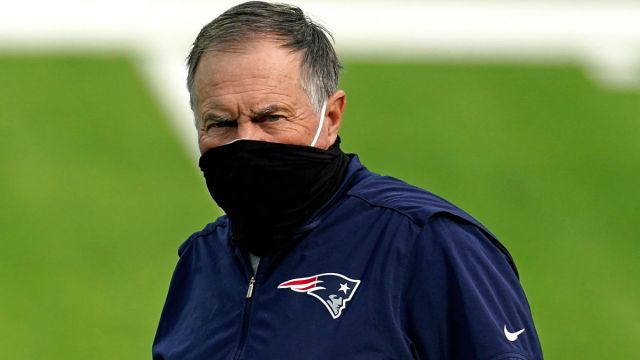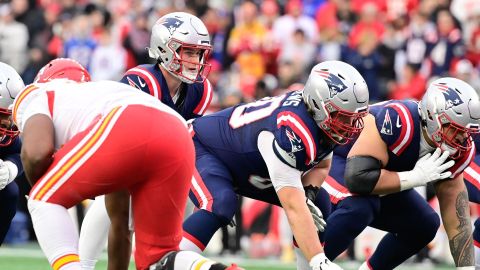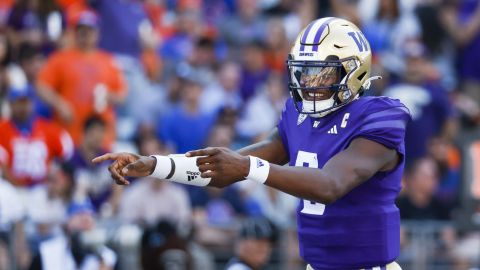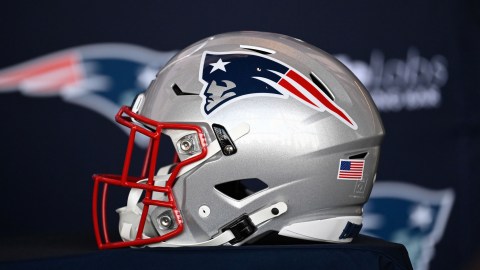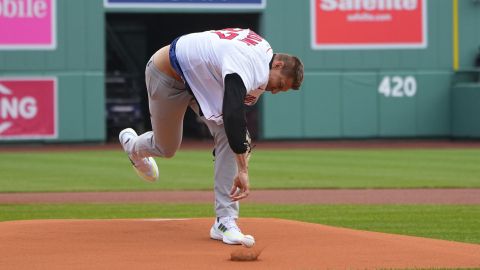The New England Patriots went their usual 12-4 and reached the AFC Championship Game in 2013, but their superstar quarterback was beginning to show early inklings of a potential decline.
Tom Brady’s completion percentage that season was his worst in a decade. So was his passer rating. Brady’s touchdown rate was the lowest of his career to date, and he averaged fewer yards per pass attempt than he had in any year since 2006, when his leading receiver was Reche Caldwell.
Granted, that 2013 Patriots squad had a suspect skill-position group that prominently featured wideouts like Aaron Dobson and Kenbrell Thompkins (and was without star tight end Rob Gronkowski for more than half the season). But the following spring, New England began planning for the future at the quarterback position.
The Patriots used a second-round pick in the 2014 NFL Draft (62nd overall) on Jimmy Garoppolo. It was the first — and, to date, only — time they had selected a QB in the first two rounds under head coach Bill Belichick, who noted Brady’s “age and contract situation” in his post-draft news conference.
Brady was 36 at the time, nearing the expiration date for most NFL signal-callers. But he, of course, defied that timeline.
Motivated in part by Garoppolo’s arrival, Brady improved in nearly every statistical category in 2014, led the Patriots to their first championship since 2004 and proceeded to reel off several of the best seasons of his unrivaled NFL career. He won additional Super Bowls in 2016 and 2018, was the NFL MVP in 2017 and now, at age 43, sits one win away from another Super Bowl berth in his first season as a Tampa Bay Buccaneer.
His opponent in this Sunday’s NFC Championship Game seems to be following a similar script.
Aaron Rodgers steered his Green Bay Packers to a 13-3 regular-season record and a spot in the NFC title game in 2019, but his production didn’t match the MVP-level numbers he posted previously. He’d been trending that way for a few years, in fact — still a top-tier QB, but one seemingly approaching the twilight of his career.
Last spring, despite pleas for the Packers to use their first-round draft pick on a receiver to complement perennial Pro Bowler Davante Adams and maximize whatever years Rodgers had left, general manager Brian Gutekunst instead targeted Rodgers’ potential successor. Green Bay traded first- and fourth-round picks to Miami to move up four spots to No. 26, where the team selected polarizing Utah State quarterback Jordan Love.
Rodgers wasn’t happy. He didn’t like the pick, for obvious reasons. But he got over it — Rodgers recently told NFL Media’s Mike Silver he spent the offseason achieving “freedom from bitterness, freedom from expectations, freedom from future thinking” — and promptly proved to Packers decision-makers that he will not need replacing anytime soon.
At age 37, Rodgers led the NFL in touchdown passes with 48, nearly equaling his total from the previous two seasons combined (51). He improved his completion percentage by more than eight points to a career-best 70.7 percent. He threw more touchdowns per pass attempt and fewer interceptions per pass attempt than any QB in the league.
Rodgers’ 121.5 passer rating was the second-best in NFL history, trailing only his own mark from 2011 (122.5). His expected points added per play skyrocketed from a middling 0.160 (12th-best in the NFL last season) to 0.382, the best by any QB since 2011, according to analytics site rbsdm.com. He’s a near lock to win his third NFL MVP Award despite playing with largely the same stable of weapons he had in 2019. (The biggest change was the emergence of previously unknown tight end Robert Tonyan, who broke out with 11 touchdowns.)
Love, meanwhile, became the first first-round QB to go his entire rookie season without playing a single snap since Jason Campbell in 2005. He’s third on the Packers’ depth chart behind Rodgers and Tim Boyle, and with the way the starter is playing, it could be years before Love sees meaningful game action.
That wouldn’t be unprecedented — Rodgers sat behind Brett Favre for three full seasons, and the Patriots held on to Garoppolo for 3 1/2 before begrudgingly trading him — and Green Bay was able to construct a formidable roster regardless. The Pack went 13-3 while boasting the NFL’s highest-scoring offense and just carved up the top-ranked Los Angeles Rams defense in the divisional round.
Still, it’s fair to question whether the resources used to draft Love — who went 36 picks earlier than Garoppolo and whom many draft experts weren’t convinced would ever develop into a viable starter — could have been put to better use. Had the Packers stayed put at pick No. 30, they could have had their choice of, say, Tee Higgins, Michael Pittman Jr., Laviska Shenault or Chase Claypool — second-round wideouts who all surpassed 500 receiving yards this season. They also would’ve had an extra fourth-rounder to play with.
That said, if Rodgers caps his “I’m still Aaron Rodgers” tour by besting Brady this weekend and then toppling either Patrick Mahomes or Josh Allen in Super Bowl LV, who in Green Bay will really care?

